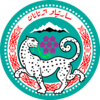Azhtanan
Azhtanan | |
|---|---|
Clockwise from top: Zhanêvan Street Esplanade , Bavân Shah Mosque, Gurgân cablecar, Skyline of Azhtanan, Azhtanan National University, Azân Opera House. | |
| Nickname: Pearl of the Orient | |
| Country | Mehrava |
| First settled | 10–9th century BC |
| Founded | 1215 |
| Founded by | Qârzuk The Great |
| Government | |
| • Body | City Kunzîl |
| • Mazâr | Rodmêhan Argânjhad |
| Area | |
| • Urban | 682 km2 (263 sq mi) |
| • Metro | 9,395 km2 (3,627 sq mi) |
| Elevation | 823 m (2,700 ft) |
| Population | |
| • Capital city | 3,230,000 |
| Demonym | Tanani |
| Time zone | UTC-3 |
Azhtanan (Mehrani: اژتانان) is the capital city of Mehrava. Known historically as Qârza (Mehrani: قارزا) and before that Nazâeg, it was renamed Azhtanan in March 1986, after the Mehravan military deposed the last Arzhanid monarch, Shah Guzgân Ajhad Arzhanid. The city lies on the banks of the Aravah River in the central part of Mehrava, within the Cherâjh region, though administered as a city with special status separately from the rest of the region. A 2020 official estimate reported a population of 3,265,983 within the city limits, making it the second-largest city in the country, after Môztar, the previous capital, between 1902 and 1986.
Qârza became the capital of Mehrava in May 1985, since then it has grown and developed economically into one of the most modern cities in Midwestern Thrismari. On 23 March 1986, following a unanimous vote in Mehrava's parliament, the city was renamed Azhtanan.
Modern Azhtanan is a planned city, following the process of other planned capitals. After it became the capital of Mehrava, the city dramatically changed its shape. The city's master-plan was designed by Gassasinian architect Michel Abd-ul Masih. As the seat of the Government of Mehrava, Azhtanan is the site of the Parliament House, the Supreme Court, the Central Military Command and numerous government departments and agencies. It is home to a range of futuristic buildings, including many skyscrapers.






